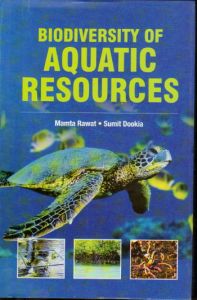
Contents: Preface. I. Ecology of lentic and lotic environment: 1. Ecological studies of holy pond Papnesh, Bidar, Kamataka/N. Shiddamallayya and M. Pratima. 2.Diatoms flora: an important bioresource of the central highland rivers, India/Jyoti Verma and Prakash Nautiyal. 3. Distribution pattern and present scenario of mangroves and associated flora of Andhra Pradesh/G.M. Narasimha Rao. 4. Analysis of growth forms of the macrophytes in Kharungpat Lake Manipur, North-East India/K. Khelchandra Singh, B. Manihar Sharma and Khurajam Usha. 5. Phytosociological studies of the aquatic macrophytes in Poiroupat Lake, Manipur North East India/Kh. Usha, B. Manihar Sharma and K. Khelchandra Singh. 6. Assessment of environmental flow requirements of Tungabhadra river basin/S. Srikantaswamy and B.K. Harish Kumara. 7. Aquatic biodiversity of Rana Pratap Sagar Lake, Rajasthan/P.C. Verma, L.L. Sharma and A.G. Hegde. 8. Rotifers of Hyderabad, Andhra Pradesh/S.V.A. Chandrasekhar. 9. Fish diversity in the pairy river of Mahanadi river system in the Chhattisgarh/S. Singh, Om Prakesh, H.K. Vardia and M.C. Chari. 10. Icthyo faunal diversity in Hussainsagar lake, Hyderabad Andhra Pradesh, India/S. Anitha Kumari and N. Sree Ram Kumar. 11. Avifauna of kole Wetlands: species diversity and abundance distribution patterns/C. Sivaperuman and E.A. Jayson. 12. Importance of aquatic avifauna in southern Rajasthan, India/Sarita Mehra, Satya Prakash Mehra and Krishna Kumar Sharma. II. Pollution: monitoring and management: 13. Monitoring of Yamuna river water for assessing its fitness in supporting aquatic biota/Shalu Mittal, Sangeet Prabha and P.K. Agarwal. 14. Health hazards of contaminated underground drinking water at Moradabad India: a survey work/D.K. Sinha and Navneet Kumar. 15. Microbiological study of Lonar Lake, Maharashtra, India/Pawar Vijaykumar Bhikusing. III. Water resources and other issues: 16. Water resources of India: a review/Pankaj Gupta. 17. Water stress and economic considerations/M.A. Khan and Hemant Mangal. 18. Regrowth and survival of bacterial pathogens on the surfaces of household containers used for the storage of drinking water in rural supply of Western Rajasthan/Mamta Rawat. IV. Miscellaneous aspects: 19. Study of soil enzyme, carbon, nitrogen content and c/N Ratio during vermicomposting of eri and Tasar culture waste/Mamata Pandey, T.V. Rao and S.K. Satapathy. 20. Analysis of sugar industry Molasses, uses and its economical importance/Poonam Nomulwar and P.M. Patil. Index.
This book "Biodiversity of Aquatic Resources" is an anthology of current original research in the field of aquatic biodiversity, wetland ecology and the applied aspects with reference to aquatic resources across the country. It is an assemblage of up-to-date information of rapid advancement and developments taking place in the field of aquatic ecology. The book is a sole omnibus of 20 chapters which discusses studies on different aspects like fisheries, diatoms, vermicomposting, bacteriology, macrophytes, rotifers, issues related to water like monitoring, water resources and stress, molassess, mangrove vegetation, avifauna and other aspects respectively contributed by eminent scientist, researchers and academicians active in the respective areas.
Broadly the book is divided into five sections including various issues of aquatic regime like aquatic ecology, conservation and management approaches, pollution and issues on water resources. The publication also throws light on the challenges aquatic regime is facing in overall country with the hope that it will not only be helpful to students and researchers but also to policy makers, environmental lawyers and the rest. It may form the basis for initiating conservation measures for securing the long term future of aquatic biodiversity. We hope that the policy makers advisors and government officials will rise to the challenge and use this document to further make progress to conserve our aquatic biodiversity.